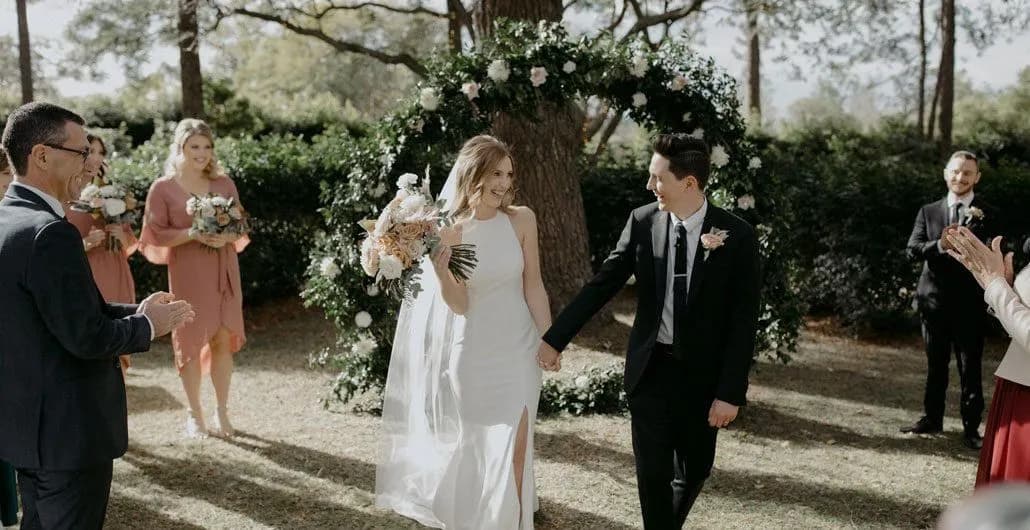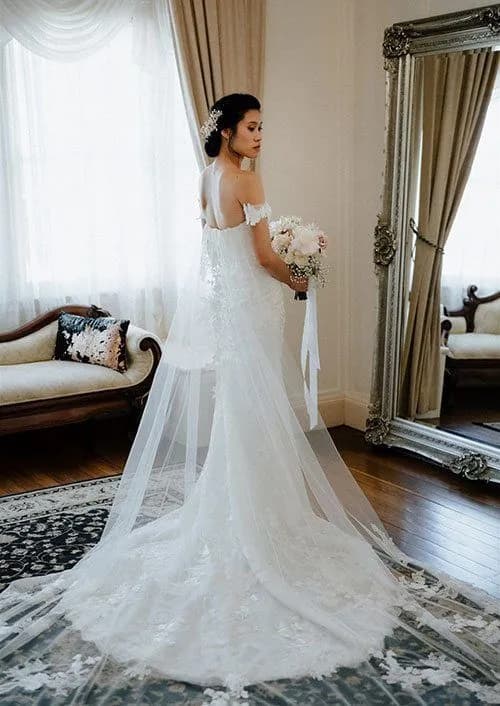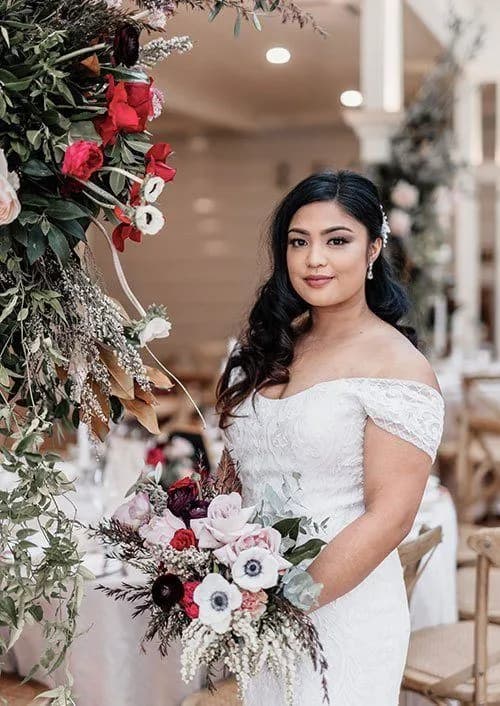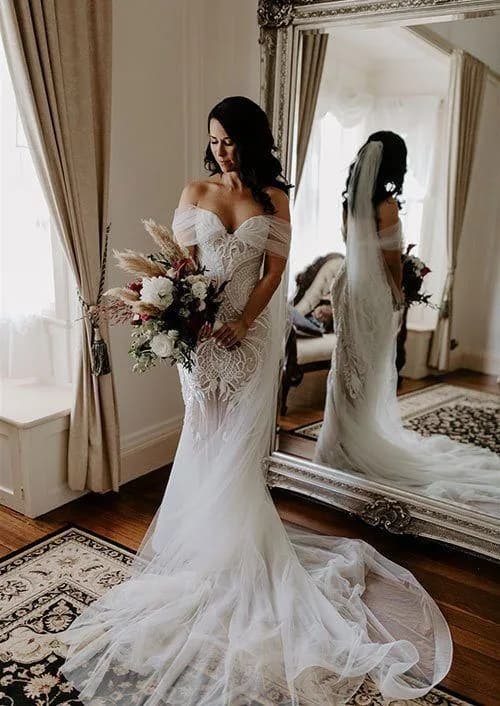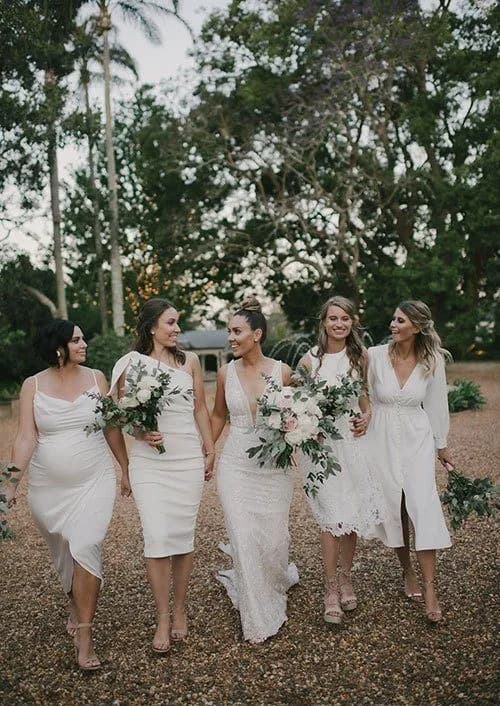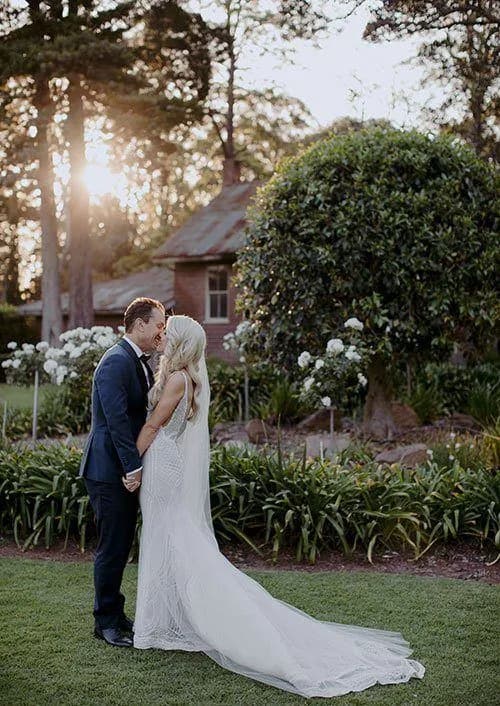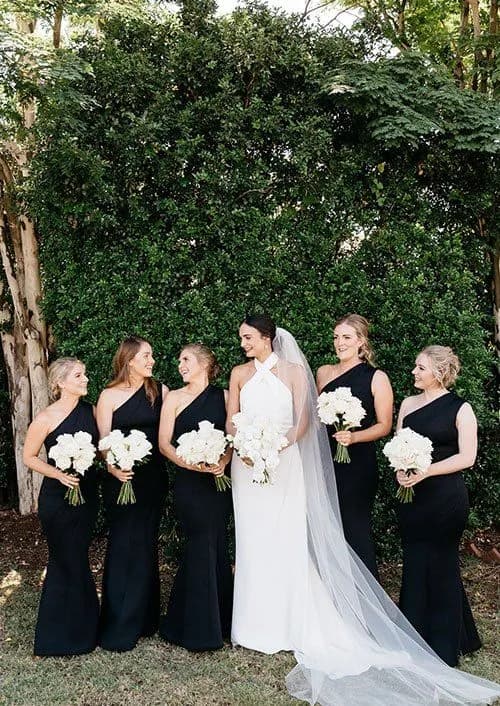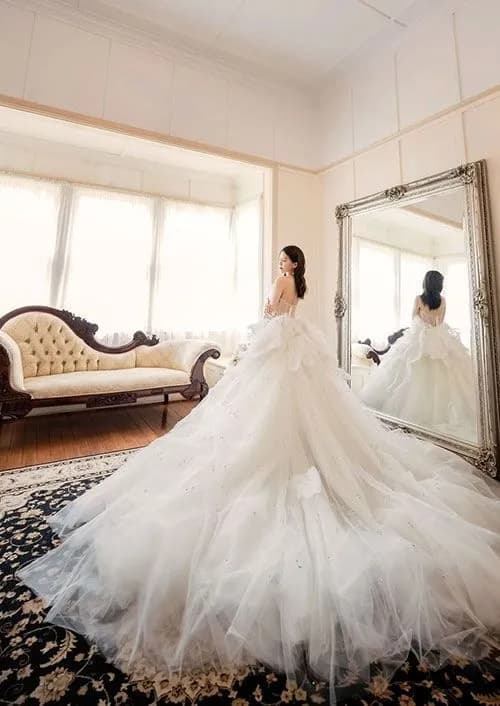We’re here to help reduce some of the anxiety surrounding wedding dress shopping. Our guide outlines everything you need to consider when hunting for a bridal gown, including the different factors you need to think about, general tips for wedding dress shopping and the top 12 bridal boutiques for Brisbane based brides so you know exactly where to go to find the gown of your dreams.
WHAT FACTORS DO I NEED TO CONSIDER WHEN SHOPPING FOR A WEDDING DRESS?
SILHOUETTE
The silhouette is a very important consideration when searching for your bridal gown. You will need to think about the shapes that you like and the ones that flatter your body. Begin searching online to get an idea of different silhouettes. Instagram and Pinterest are a great way to collect inspiration and you can take these ideas with you to bridal boutiques. Try to be realistic with the shapes that you choose. The fit needs to be something that will flatter your figure, so keep this in mind when you are browsing online.
Common silhouettes for wedding dresses include:
A-line – An A-line dress is perfect for the chic bride. The fitted top accentuates your shape and then drops to the floor in a looser, flattering skirt. Ballgown – Looking for the classic princess look? A ballgown might be for you. The bodice is typically fitted to the waist in this style before flaring into a voluminous skirt. Ballgowns are typically floor length and provide that elegant, timeless look. Mermaid – As the name suggests, the fit of this dress very much follows the shape of a mermaid. This gown fits closely to the body from the chest down to the knees, where it then flares out like a mermaid’s tail. A great way to add excitement to a traditional look. Sheath – The sheath is extremely stylish and certainly makes a statement as a wedding dress. This type of gown is typically fitted from head-to-toe, making it a great way to show off your curves. They also usually have a leg split. Trumpet – Similar to the mermaid silhouette, this dress has a fitted top although only from the chest to just over the hips. It then flares out from above the knees, commonly creating a lovely train. The trumpet dress is a good option for brides wanting a fitted dress with a ‘wow’ factor.
FABRIC
The options are endless when it comes to fabric choices for wedding dresses. You can choose to have a dress made from a single fabric, or you might want to combine different textures to create a unique aesthetic. Consider the overall look you are trying to achieve as this will guide the type of fabric that is right for you. The silhouette you choose will also have a big impact on the material as some are better for fitted designs, while others are more suited for voluminous ballgown skirts.
That being said, it is still important that you spend some time thinking about the fabrics that you like and don’t like. Some brides have a preference for lace, while others prefer more structured materials. It really comes down to personal taste.
If you are finding the world of fabrics confusing, here’s a quick run-down of fabrics commonly used to create wedding dresses:
Lace – A popular choice when it comes to wedding dresses, lace can transform even the plainest of gowns. Whether you opt for a complete lace dress or only some lace detail, the fabric will add something special to your dress. It comes in a huge number of variations meaning your wedding dress will maintain a certain uniqueness. Satin – Satin is also a popular choice, although it is not actually a fabric. It is the shiny finish that is put on silk, polyester or a combination of these two materials. It’s a great option for structured gowns and is extremely durable, although beware that is can wrinkle easily. Organza – A delicate fabric, organza is used for the floaty, dreamy type of wedding dresses. It is a lightweight fabric that is typically sheer and great for layers on a skirt. Chiffon – Similar to organza, chiffon is also a light, sheer fabric that is good for layering. It’s even lighter than organza so is perfect for a flowing look. Charmeuse – This fabric is often used in sheath dresses and has a real shine to it. It can be made from silk or synthetic materials and creates figure-hugging dresses that show every curve. Tulle – Tulle is a woven fabric that is traditionally used to make tutus. It is a popular choice for ballgown silhouettes as it adds body and structure.
SEASON
The date of your wedding is going to factor into the design of your chosen wedding dress. Obviously long sleeves are a no go if your wedding is in the middle of summer – no bride wants to be a sweaty mess on her big day! On the other hand, long sleeves and thick fabrics are going to be an absolute necessity if you’re opting for a winter wedding. Give some thought to the likely weather of your wedding and pick a dress that is practical for the occasion. Being uncomfortable on your wedding is the last thing you want.
WEDDING THEME
If you want your wedding aesthetic to come together seamlessly, it is best to consider your theme before choosing a dress. The dress should make a visual statement while also enhancing the theme of your wedding. That way, you won’t look out of place against your décor. If you’ve decided on a sleek, modern vibe for your wedding, then a relaxed, bohemian wedding dress is going to look out of place. Similarly, a full, princess ballgown may not be the best match for a casual wedding on the beach. It’s best to view your dress as an extension of your wedding theme, unless you want it to contrast then go ahead with whatever you please!
BUDGET
This is always the least favourite consideration for brides, but an important one nonetheless. Before you even begin looking at wedding dresses, you should determine a budget so that you know your price range. Sit down with your fiancée and have a conversation about funds for the entire wedding, including how much you can afford to allocate to your gown.
